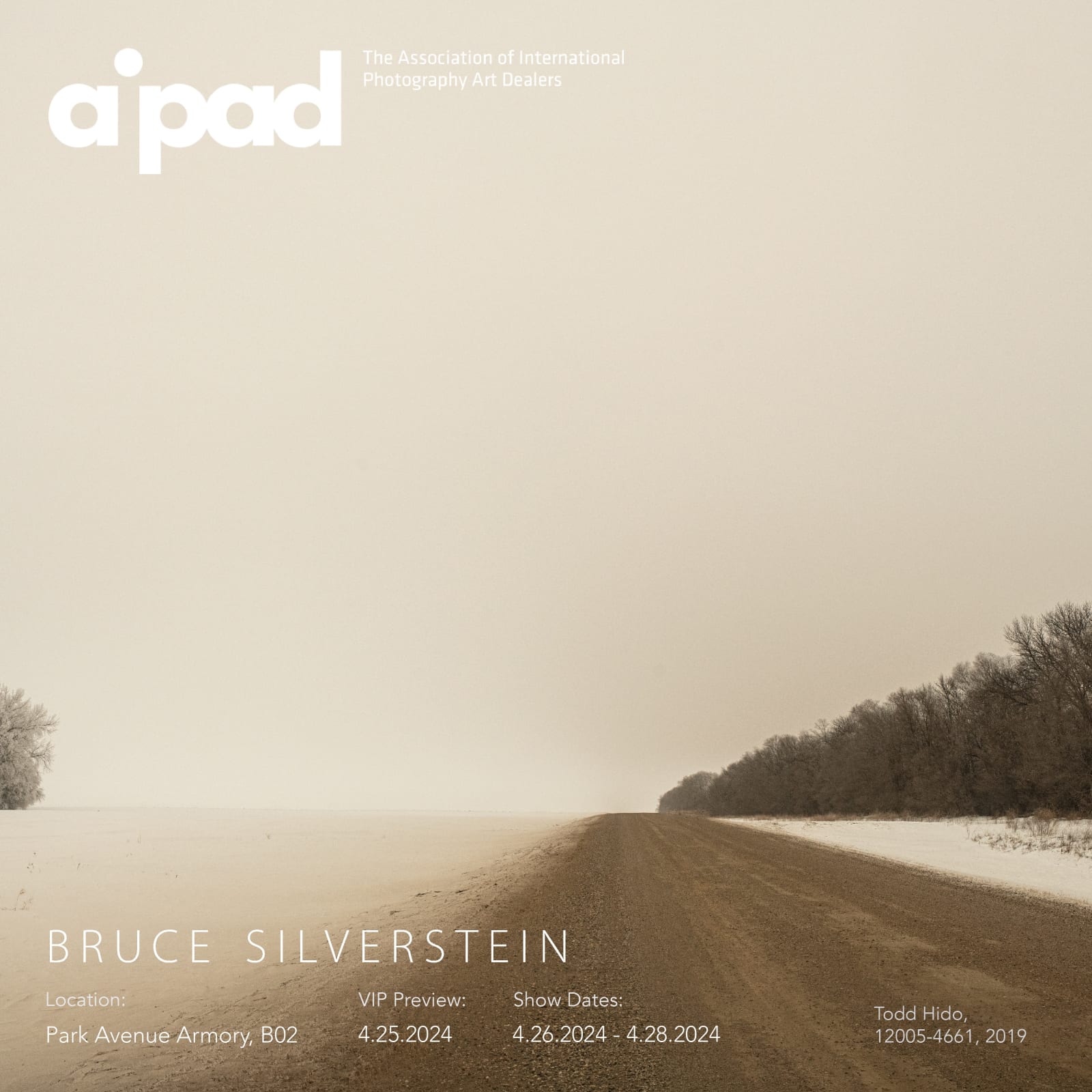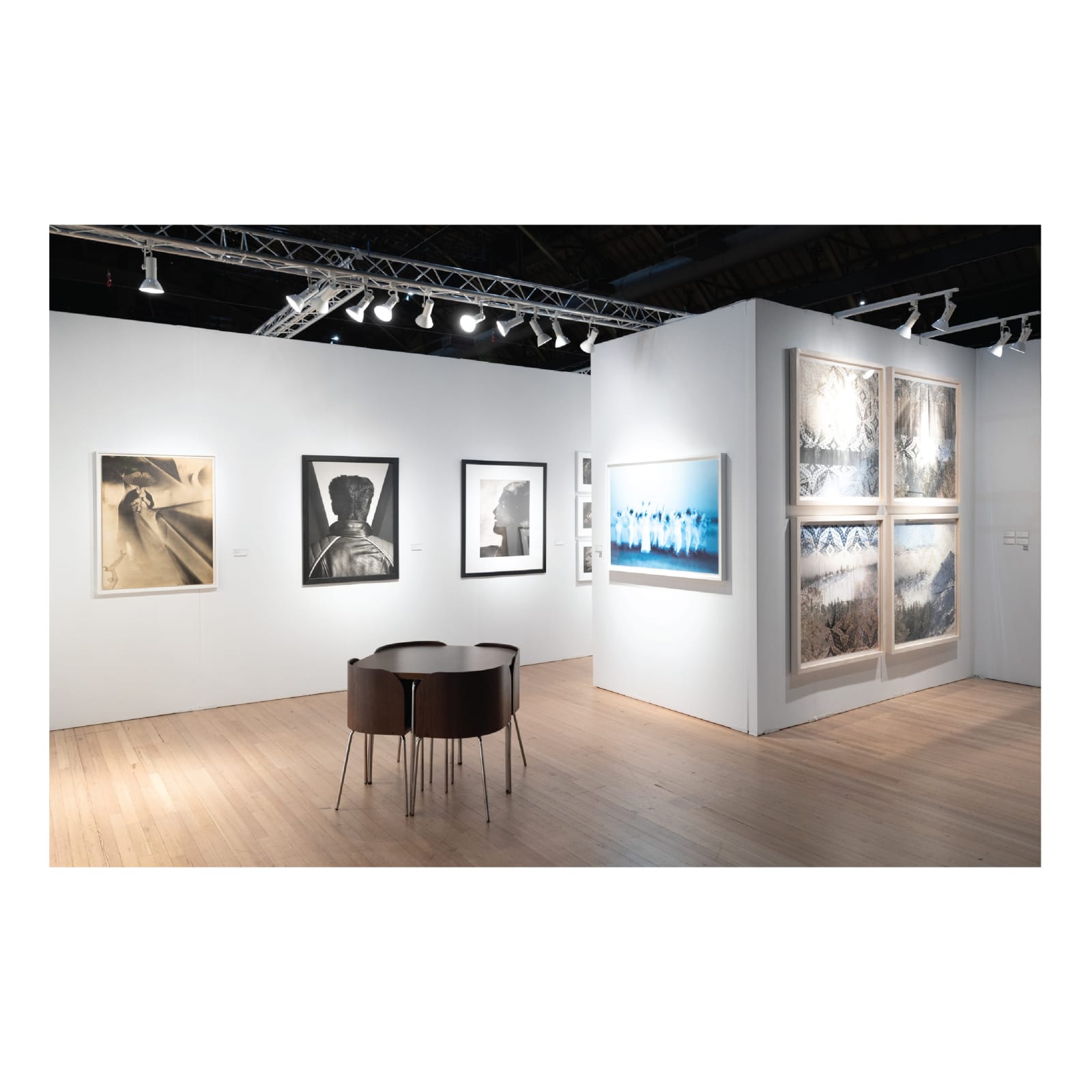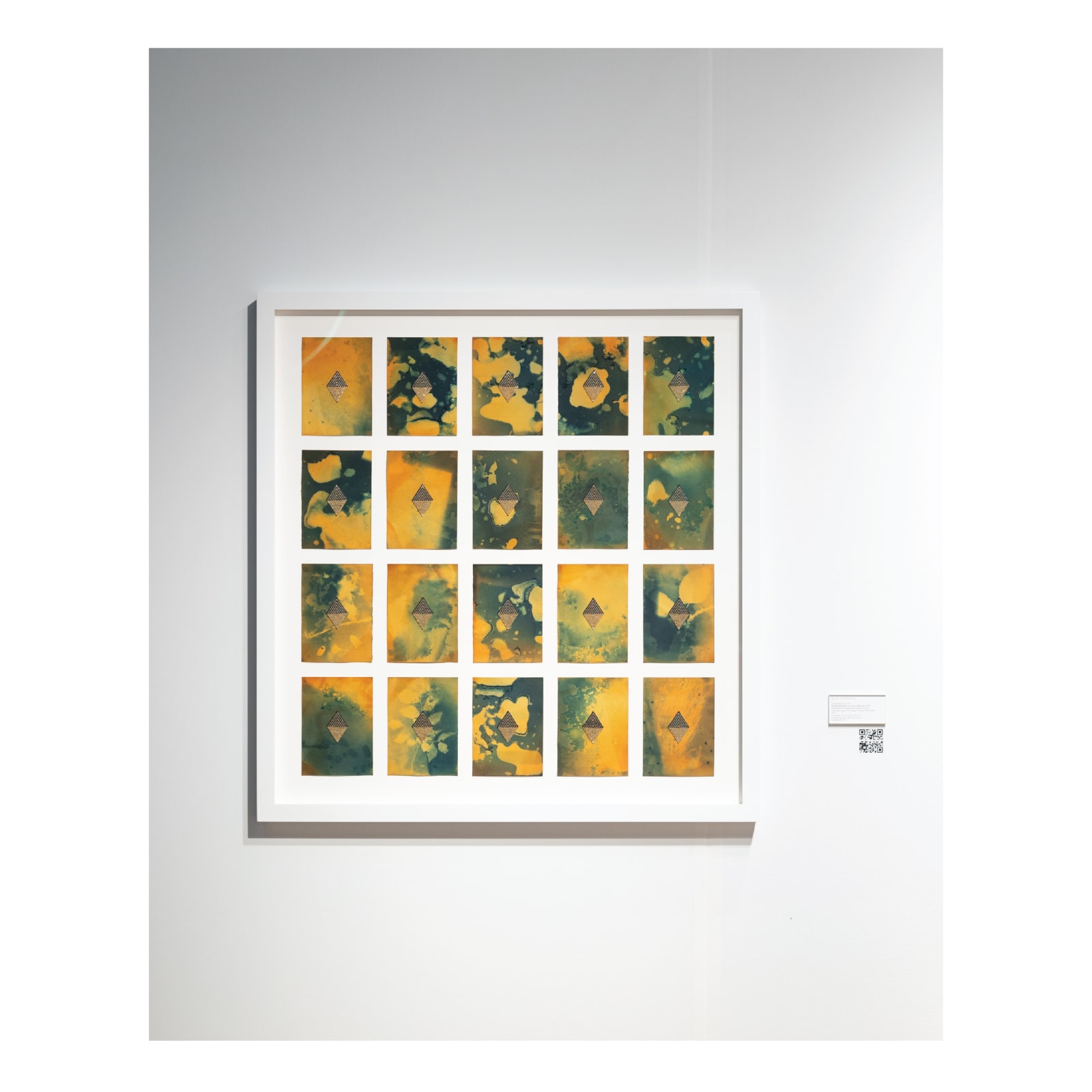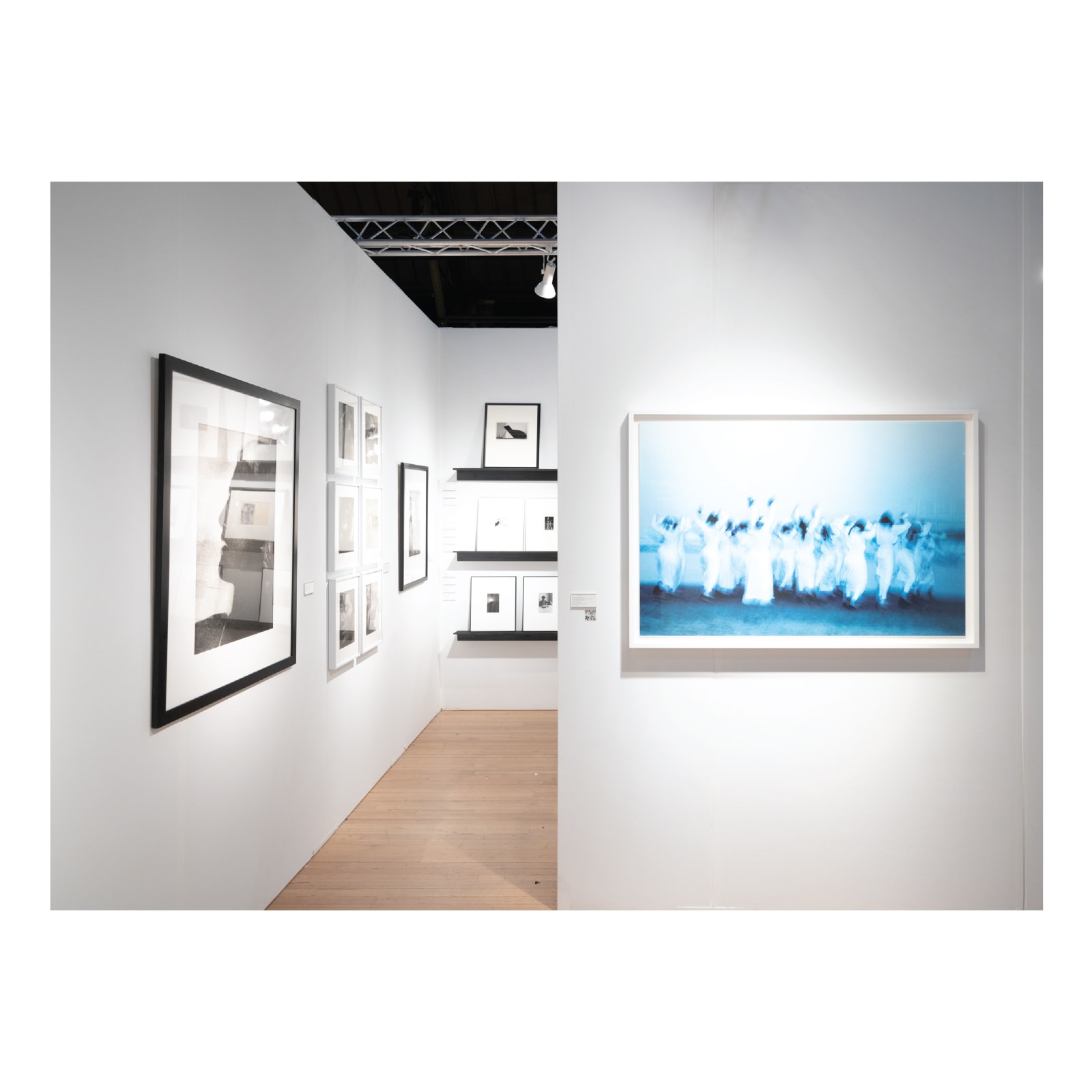AIPAD 2024
For AIPAD 2024, Bruce Silverstein Gallery will present photographic and mixed media works with a predominant focus on the Native diaspora, featuring new works by Dakota Mace and Sarah Sense, two artists whose work is held in numerous institutional collections. Showing Mace and Sense together will provide comprehensive insight and education into the long-overlooked Diné (Navajo), Chitimacha, and Choctaw history, beliefs, and creative practices.
Dakota Mace reinterprets the symbols of creation stories, cosmologies, and social structures, using traditional and non-traditional materials that are connected to the places they reside, the memories they hold, and the complexities they share with the Diné lineage. Mace utilizes design elements from her heritage, most often incorporating the motif of Na’ashjéii Asdzáá, Spider-Woman, who is one of the most important deities to the Diné. Spider-Woman played an integral part in preserving the lives of the Diné by guiding the earliest weavers so they could provide for themselves while teaching ways of balance within the mind, body, and soul. At this year’s AIPAD, we will be showing Mace’s newest body of work.
Sarah Sense employs traditional weaving techniques from her Chitimacha and Choctaw family, combining photography and craft rich with historical significance and personal meaning. Her most recent body of work, Hinushi (Trail), weaves materials found in historical archives, specifically allotment maps from Oklahoma, with personal photographs as an act of reclamation. Sense’s work weaves together the past, present, and future, reflecting on the histories told and untold.
Mace and Sense’s work tells the story of Indigenous communities’ historical marginalization and assimilation, including the destruction and loss of land through colonization and the disappearance of culture and traditions through forced assimilation. However, they also provide an uplifting testament to Native resistance and resilience.





































